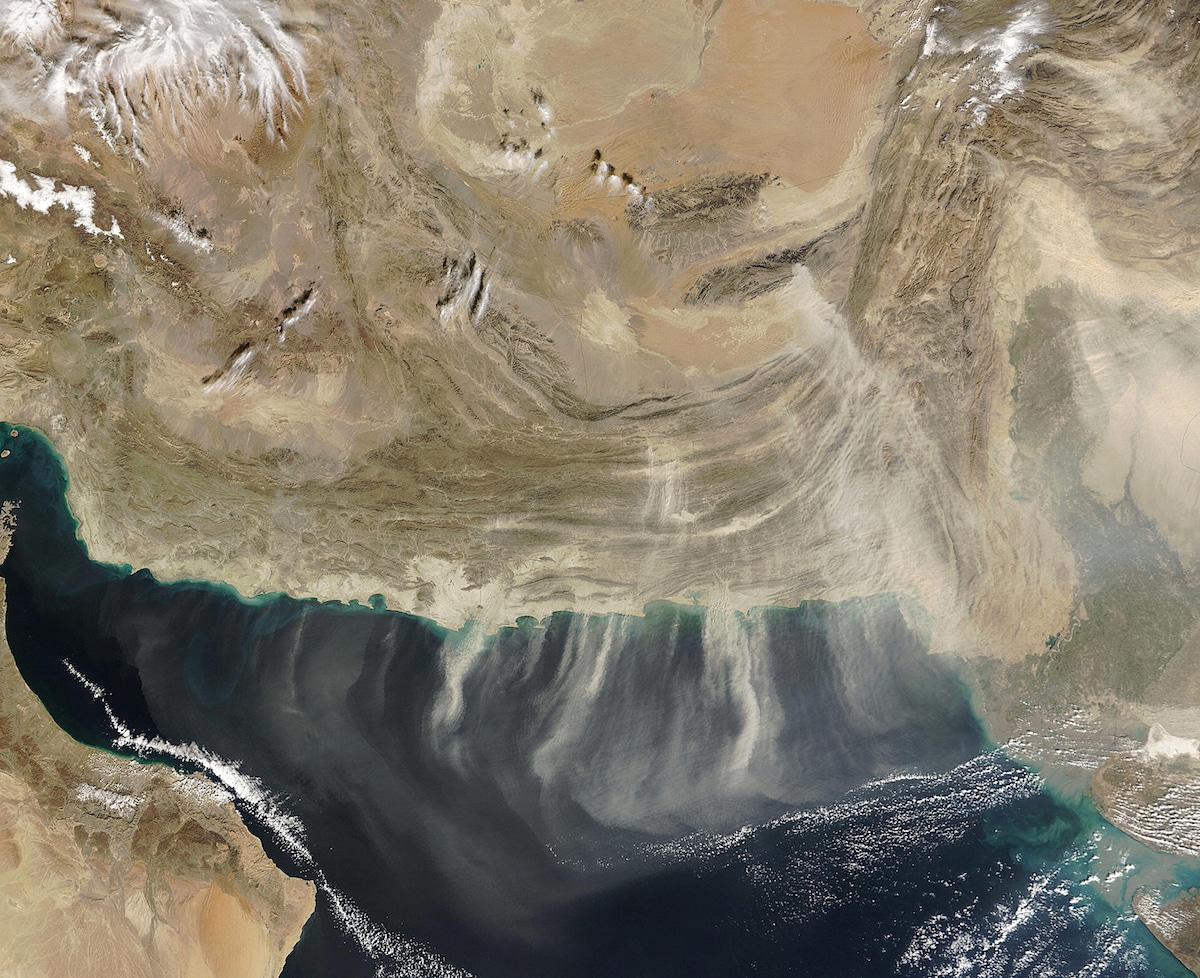Dust Nourishes Phytoplankton, Boosting Ocean’s Ability to Store Carbon, Study Finds

 Why you can trust us
Why you can trust us
Founded in 2005 as an Ohio-based environmental newspaper, EcoWatch is a digital platform dedicated to publishing quality, science-based content on environmental issues, causes, and solutions.
Dust, tiny particles of everything from skin tissue to microplastics, lifted by the wind to settle on a table, the fur of an Arctic fox or the surface of the ocean. Dust is something seen by humans as an annoyance to be wiped away or a pollutant to avoid inhaling, but it also plays a nourishing role in global ocean ecosystems.
New research led by Toby Westberry, an oceanographer at Oregon State University (OSU), explores dust’s part in helping to sustain marine life while also regulating carbon dioxide levels in the atmosphere.
The study, “Atmospheric nourishment of global ocean ecosystems,” was published in the journal Science.
It has long been understood by scientists that phytoplankton — plantlike organisms that are the foundation of the marine food web and reside in the upper reaches of the ocean — depend on land-based dust for essential nutrients, a press release from OSU said.
“Over the vast open ocean, vital nutrients for phytoplankton growth in the sunlit surface layer are largely provided through physical transport from deep waters, but some nutrients are also provided through atmospheric deposition of desert dust,” the study’s authors wrote.
It has been difficult for researchers to come up with a global estimate of how much marine species rely on dust particles from soil and other sources brought to them by the wind and that also affect the planet’s climate.
“This is really the first time it has been shown, using the modern observational record and at the global scale, that the nutrients carried by dust being deposited on the ocean are creating a response in the surface ocean biology,” Westberry said in the press release.
Phytoplankton play an important role in the carbon cycle by turning atmospheric carbon dioxide that dissolves in surface ocean waters into organic matter through photosynthesis. Some of this organic matter sinks to the bottom of the ocean — the planet’s greatest carbon sink — and is deposited there, where it can no longer contribute to global warming.
For the study, Westberry and other scientists estimated that dust enables 4.5 percent of the global yearly amount of carbon absorbed by the ocean, with regional amounts approaching 20 to 40 percent.
“That’s important because it’s a pathway to get carbon out of the atmosphere and down into the deep ocean,” Westberry said. “The biological pump is one of the key controls on atmospheric carbon dioxide, which is a dominant factor driving global warming and climate change.”
Most key nutrients for phytoplankton growth move up from the ocean depths to the surface — known as upwelling — but some come from atmospheric dust.
Historically, known atmospheric inputs of nutrients into marine ecosystems have come from big events like volcanic eruptions, wildfires and intense dust storms.
However, for the new study, the researchers expanded their research to include responses of phytoplankton across the globe.
The research team used satellite data to look at how the color of the ocean changed when dust was added. Greener waters usually mean abundant and thriving populations of phytoplankton, while bluer waters indicate areas with fewer and often undernourished numbers.
“Determining how much dust is deposited into the ocean is hard, because much of the deposition occurs during rainstorms when satellites cannot see the dust. That is why we turned to [observations of] a [NASA global] model,” said University of Maryland, Baltimore County’s Lorraine Remer, who is a research professor at the Goddard Earth Sciences Technology and Research Center II, a consortium led by UMBC.
The team found that how phytoplankton respond to dust deposition differs depending on the location. For example, in low-latitude parts of the ocean, dust is generally regarded as beneficial to the health of phytoplankton, but not to their abundance. But in higher-altitude waters, the health and abundance of phytoplankton is often improved by the availability of dust. This is due to the varying relationships between the phytoplankton and the marine creatures that consume them.
In lower altitude marine environments, there is a close relationship between the growth of phytoplankton and predation due to these environments being more stable, so when phytoplankton are made healthier and more abundant by the presence of dust, they are quickly consumed.
But the continuously changing environmental conditions present in higher altitudes leads to a weaker link between phytoplankton and their predators, leading to healthy and abundant phytoplankton populations.
“The current analysis demonstrates measurable ocean biological responses to an enormous dynamic range in atmospheric inputs,” Westberry said, as Earth.com reported. “We anticipate that, as the planet continues to warm, this link between the atmosphere and oceans will change.”
Subscribe to get exclusive updates in our daily newsletter!
By signing up, you agree to the Terms of Use and Privacy Policy & to receive electronic communications from EcoWatch Media Group, which may include marketing promotions, advertisements and sponsored content.

 233k
233k  41k
41k  Subscribe
Subscribe 




